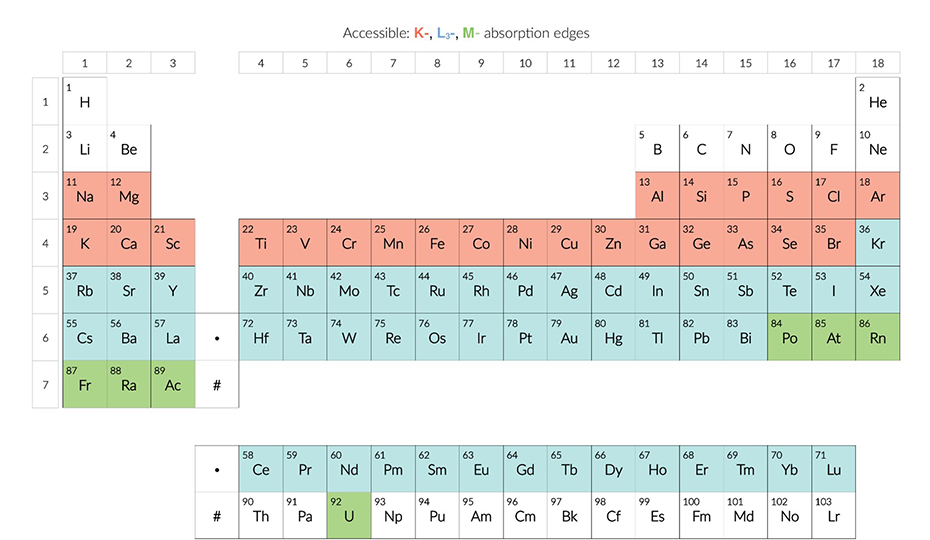The bending magnet beamline ASTRA ( Absorption Spectroscopy beamline for Tender energy Range and Above ) is dedicated to X-ray absorption spectroscopy (XAS) and related techniques in the energy range from 1 keV to 15 keV, covering the K absorption edges of chemical elements between Mg and Se along with the L and M edges of many other elements.
XAS is a non-destructive, element specific characterization method which can be applied to both crystalline and amorphous materials, liquids and samples in the gas phase. Moreover, XAS measurements can be performed under application relevant conditions (in situ). Both XANES (X-ray absorption near-edge structure) and EXAFS (extended X-ray absorption fine structure) data contain valuable structural information about the atomic environment of the absorber atoms in the materials under investigation. At ASTRA beamline XAS spectra can be recorded in transmission and/or fluorescence modes.
The ASTRA is intended for fundamental and applied research in:
- materials science, physics and chemistry (investigation of functional materials, esp. alloys, oxidic systems and catalysts, coatings, adhesives, etc.),
- biomedicine (investigation of metalloproteins, investigation of the stability, uptake and therapeutic mechanism of action of inorganic and bio-inorganic drugs, etc.),
- environmental protection (e.g., speciation of toxic elements during bioaccumulation), and many others …
The ASTRA was especially designed for XANES/EXAFS measurements in the tender X-ray range, i.e., at the K absorption edges of important elements such as P, S, Si, Al and Mg. Besides, ASTRA` energy range also includes K-edges of heavier elements up to Se, L-edges of elements up to Bi and some M-edges of elements including U, which allows investigation of a variety of highly relevant materials.

Feel free to contact us to discuss the concept of your experiment and to set strategies for carrying it out.
The beamline is built by the project leader Hochschule Niederrhein University of Applied Sciences (Germany) in collaboration with the Synchrotron Light Research Institute (Thailand), the Physics Institute of University of Bonn and National Synchrotron Radiation Centre SOLARIS Jagiellonian University.
Beamline parameters
| Parameters | Value |
|---|---|
| Source | Bending magnet (1.31 T) |
| Available energy range | 1 – 15 keV |
| Energy resolution ΔE/E | InSb(111): 7 × 10-4 (at sulfur K edge – 2.472 keV) data for other crystals and for other edges will be completed in near future |
| Beam size at sample (horizontal x vertical) | 10 mm × 1 mm |
| Photon flux at sample | 109-1010 [ph/s/0.1 A] |
| Polaryzation | Linear (hoirizontal) |
|
End station ASTRA – tender and hard XAFS |
Currently available:
Under development (not available in current Call): |


